The Best Clay Bars to Keep Your Car Shining Like New

Routine washing of your car is great for keeping your paint looking shiny and new, but occasionally, you’ll want to put in some serious elbow grease to ensure your paint remains protected. You’ve likely heard of polishing and waxing your car to restore some of its lost shine, but to really keep your paint finish pristine, you’ll want to use a clay bar.
Essentially, clay bars are an essential tool to remove dirt and contaminants from your car that typically can’t be removed with a standard wash, or even through polishing and waxing. The good news is, the process of clay bar detailing is straightforward enough that anyone can do it, but it does take a bit of time. If you’re looking for ways to preserve that new car finish, or desperately needing to fix your old paint, take a look at clay bars.
Below, we’ve compiled a list of the best clay bars currently on the market. For more information on clay bars and how they work, refer to our table of contents.
Table of contents
- 1. Editor's Pick: Chemical Guys Medium Clay Bar and Luber Kit
- 2. Best Value: Mothers Speed Clay 2.0 (17240)
- 3. Best Professional Clay Bar: Meguiar's Professional Detailing Clay (C-2100)
- 4. IPELY Clay Bars
- 5. Griot's Garage Paint Cleaning Clay (11153)
- Everything You Need to Know About Clay Bars
- What is a clay bar?
- Why do I need clay bar detailing?
- What kind of contaminants are we talking about?
- How does a clay bar work?
- How do I know I need a clay bar detailing?
- How do I use a clay bar?
- What should I do after the detailing?
- Isn’t polishing the paint better than clay bar detailing?
- What kind of clay bars are out there?
- Can I use the clay bar on other car parts to make them shiny again?
- Are there alternatives to clay bars?
- Can clay bars damage the paint on my car?
- How often should I clay bar my car’s paint?
- Should I use a clay bar on a brand-new vehicle?
- Can I keep using the clay bar after dropping it on the ground?
- Can a clay bar remove oxidized paint?
- How should I store my clay bar after cleaning?
- How long will it take me to detail my entire vehicle?
- Can I use soap and water as a lubricant?
- How to Use Clay Bars: A Step-by-Step Guide
- Extra steps for best results
- Recent Updates
1. Editor's Pick: Chemical Guys Medium Clay Bar and Luber Kit
Chemical Guys offers 4 different clay bars in its lineup to cater to different needs. Your choices are original, light, medium, and heavy, and each clay bar has a different color to represent its type. The medium and heavy clay bars are professional-grade products, fairly stiff and not easy to shape. They are, however, very good at removing any kind of contaminants in your paint and overspray. Regardless of the clay bar chosen, it's one of the best out there if you have the experience and patience to properly use it.
It's a non-abrasive product, so it's safe for all aluminum, chrome, fiberglass, paint, and finishes. It includes a 16-ounce bottle of Chemical Guys' Clay Luber.
Pros | Very good at removing contaminants, overspray, and oxidized paint, can be used on most surfaces, price, great for experienced detailers |
Cons | Medium and heavy clay bars are stiffer and not very pliable |
2. Best Value: Mothers Speed Clay 2.0 (17240)
This isn't exactly a traditional clay bar, but it can clean and detail your paint just as well as one. Known as Mothers' Speed Clay 2.0, it is extremely effective at removing most contaminants from your paint, using a patented rubber polymer technology. The Mothers Speed Clay 2.0 is safe to use on any smooth surface area, including your car's paint, chrome pieces, glass, and smooth plastics—you just need to keep it wet.
Since this isn't a traditional clay bar, you can't fold or cut it into small pieces. This makes it less than ideal for tight spaces, but it is much easier to use on large surfaces. It also has an ergonomic design, making it more comfortable and quicker to use than a normal clay bar. It can also be dropped, which is important since some users do complain that it can slip out of the hand easily.
Overall, it's not a very expensive product and it can be used on about 20 different cars before you need a new one. The Speed Clay 2.0 offers great value and performance.
Pros | Very easy to use, can be reused on 20 cars, very good at removing contaminants, can be reused even if dropped on the ground, works on a wet car - no lubricant required |
Cons | Tough to use on tighter spaces, moves too easily |
3. Best Professional Clay Bar: Meguiar's Professional Detailing Clay (C-2100)
Car owners with experience in clay bar detailing and in search of a professional product should consider Meguiar's Professional Detailing Clay. This product is designed for adept users, as it's quite "grabby" – you'll need to use ample lubricant for it to work properly. This clay bar will also stick to your hands while using it, another reason why it's recommended for experienced users. It is, however, very pliable and comes with its own container, allowing it to be stored for future use.
With the right usage, you can expect professional results from this clay bar. It's designed to remove nearly any contaminant that could be on your vehicle's paint, including overspray, brake dust, embedded metal, tar, or even oxidized paint. The end result is a finish as smooth as glass, so if you want the best of the best, this is the way to go, provided you know how to properly use it.
Meguiar's Professional Detailing Clay is a bit on the expensive side and does not include any lubricant, so keep that in mind when calculating your costs.
Pros | Extremely good at removing contaminants, easily pliable, comes with a plastic container, can be used on 7-8 cars |
Cons | A bit sticky so it requires the hand of a professional, price |
4. Convenience Pick: Adam's Polishes Clay Mitt
Adams offers a unique approach to the traditional clay bar. Rather than a disposable unit, Adams will sell you a kit with its fantastic detail spray (we love that stuff), and a medium-grade clay bar mitt. The mitt design massively speeds up the detail process, as working the clay is much easier when it’s constantly next to your warm hands. We’ve used these before and they really are noticeably quicker than a simple bar o’ clay.
Pros | Clever mitt design, great detail spray accompaniment |
Cons | Mitts are pricey, still single-use |
5. Griot's Garage Paint Cleaning Clay (11153)
Griot's Garage Paint Cleaning Clay, competitively priced for the quantity provided, is a well-rounded clay bar. It comes in an 8-ounce sealed container, ensuring it maintains moisture even after long storage. While it's a bit harder to form and shape than other products and lacks the same tactile experience, it works quickly on larger surface areas. While the manufacturer recommends using this clay bar with Griot's Speed Shine lubricant, any other lubricant, like Meguiar's Quik Detailer, will also suffice.
Its lighter shade makes it easier to see the contaminants on your paint finish during use. The lighter shade also helps indicate when it's time to fold over the clay bar and work on another area of your car.
Pros | Comes in a large quantity, fast to work with, includes sealed container, price |
Cons | Not very pliable so it's a bit hard to work with, Griot's lubricant is sold separately, container is much larger than the clay inside |
6. Adam's Medium Grade Clay Bar Detailing Kit
Supposing the mitt isn’t your style, Adams Polishes offers a clay bar kit that’s great to use. This is a more traditional kit, again featuring the brand’s detail spray. Here, you’ll get a pair of traditional clay bars too. A nice added bonus is the storage container, which should help keep clays you are able to reuse nice and clean.
Pros | Great detail spray companion, reasonable pricing |
Cons | Relatively pricey |
Everything You Need to Know About Clay Bars
Photo Credit: Jitchanamont / Shutterstock.com
Everyone remembers how their brand new car looks as they take delivery at the dealership. The paint shines brilliantly while feeling nice and smooth, but we all know that finish doesn't last unless you meticulously take care of your car. Despite routine washing and even waxing, you may notice after a while there are some flaws in your car's paint. That's when you might want to turn your attention to using a clay bar.
Properly done, clay bar detailing can help your car maintain that mirror-like finish, especially if you do it on a regular basis. Some detailing enthusiasts say clay bars are the best cleaning method you can do from your own home, getting rid of all the contaminants and dirt that have been embedded into your paint.
Keep in mind that detailing with a clay bar isn't a substitute for regular washing and waxing of your car. Clay bar detailing should be done in combination with the other two in order to keep your car looking brand new.
What is a clay bar?
One easy way to describe a clay bar is to think of it like Play-Doh or Plasticine, a compound you likely played with when you were a kid. In fact, a clay bar resembles those products and has similar attributes, being very elastic and able to gather up dirt from everything it touches. However, it is not a good idea to use Play-Doh on your car.
More accurately, a clay bar is a synthetic resin substance, although in the past natural substances were used. Clay bars are specifically engineered to remove dirt and contaminants from surfaces, such as the paint of your car. You can also use it to clean your car's glass windows, and even fiberglass or carbon fiber surfaces.
Why do I need clay bar detailing?
Day in day out, your car's paint is getting assaulted by contaminants in the environment, from dirt to even overspray. While routinely washing your car will remove the dirt from the paint's surface, there are times contaminants will get stuck to the paint. In addition, you may have micro scratches or abrasions in your finish that you can't see with your own eyes, and those hold onto contaminants as well.
Left untreated over time, the paint of your vehicle will start losing its luster from all those contaminants being built up. That's when clay bar detailing is your best option, since the product is designed to pick up all those contaminants straight off the surface—something washing and waxing may not do.
What kind of contaminants are we talking about?
Generally, most of the dirt that ends up on your car's surface are particles that are large enough to be removed with a routine car wash. But when you're looking at clay bar detailing, it's not that type of dirt you're concerned about. Instead, you're focusing on getting rid of much smaller particles that have been embedded into the paint's finish.
Some of those stubborn contaminants include brake dust, vehicle exhaust particles, sap, tar, and even natural pollution. If left on your car's surface for a long period of time, they can start ruining your clear coat and paint.
How does a clay bar work?
In the most basic sense, think of a clay bar like a magnet, attracting and picking up any dirt it encounters so your paint surface is left smooth and clean. It's a powerful compound that can pick up dirt caught in small imperfections on your vehicle's paint. It's a great supplement to general washing with soap and water, which removes larger particles from the surface of your car. More importantly, properly using a clay bar won't damage your paint's finish unlike brushes and sponges that could leave scratches in your paint.
How do I know I need a clay bar detailing?
Determining whether your car needs clay bar detailing isn't as straightforward as knowing when it needs a wash. If you regularly wax your car, its finish may look shiny and feel smooth enough that you don't believe using a clay bar is necessary. But if you carefully run your hand across your car's surface, ideally while wearing rubber gloves, you may notice minor bumps or imperfections on the paint. Those are likely contaminants that have gotten stuck to your car's surface that will require the use of a clay bar.
If you recently detailed your car by giving it a proper wash along with a coat of wax and still notice it's not as smooth as you'd like, it's time to do some clay bar detailing. Once you've gone through your car with a clay bar, you'll feel the difference between smooth clean paint, and a surface that has imperfections. At that point, you'll have a reference as to when your car's surface needs the clay bar treatment.
How do I use a clay bar?
Many car detailing shops now offer clay bar detailing, but it is something you can do from your own home if you have the time and patience. Clay bars are affordable products and can be used numerous times before needing to purchase a replacement.
If you've taken a look over our list of recommended products, you'll notice that some companies sell clay bars on their own, while others offer an entire package or kit. Typically a kit will include a clay bar or two, a bottle of quick detailer to serve as a lubricant, and a microfiber towel. If you're purchasing a clay bar on its own, it's highly recommended that you purchase a bottle of quick detailer and have access to a couple microfiber towels.
Since a clay bar is rather sticky, you don't want to run it across the surface of your car without any sort of lubricant. Otherwise, it'll be difficult to move around your car's surface, and it can also stick to the paint itself, which could be damaging. Without lubrication, you'll end up using more force and the clay bar could even scratch the surface. While some users will say you can just use soap and water, it's best to use a lubricant like quick detailer which is formulated to safely clean your car's surface. The microfiber towel is there to dry up any leftover quick detailer once you're done using the clay bar on a particular area.
When using a clay bar, it's recommended to cut a portion of it (1/3 or 1/4) and form it to resemble a round hockey puck. This makes it easier to work with and once you're done detailing a certain area of your car, you can simply fold the clay bar in half and form a hockey puck again. This step is extremely important, as any of the contaminants that were removed could scratch your car if you're using the same side all the time. Constantly reforming the clay bar so it has a clean surface to work with is ideal.
If you happen to drop the clay bar on the ground, you'll want to stop using it immediately. It can pick up a lot of dirt on the ground which would just damage your paint if you're to reuse it.
What should I do after the detailing?
For the best results, you should clay bar your car after giving it a nice, proper wash. Once you're done with the clay bar process however, it's best to give it a nice coat of wax to cover up any minor scratches that are on the surface, preventing contaminants from getting stuck in them. If your paint has a lot of minor scratches, it's recommended to give it a nice polish before applying the coat of wax. The end result should be an extremely smooth and shiny surface.
Isn’t polishing the paint better than clay bar detailing?
Polishing your car isn't the same as clay bar detailing. Essentially, the process of polishing is removing paint from your car, making it shiny again since the paint underneath is fresh. In fact, aggressive polishing can remove too much paint from your vehicle and expose the primer or undercoat.
Clay bars on the other hand, will only remove the contaminants from the paint, rather than the paint itself. In fact, polishing your vehicle can risk embedding the contaminants further deeper into your paint. If your car's surface does need polishing because it has a lot of minor scratches, it's recommended to use a clay bar first before polishing. This way, no contaminants are on the surface and the polishing will result in a clean finish.
What kind of clay bars are out there?
Not all clay bars are created equally, varying in aggressiveness or how much dirt they're capable of removing. For the average user, we recommend consumer grade or medium grade clay bars as they're easier to work with than professional grade clay bars, or fine grade clay bars. Although consumer grade clay bars aren't as powerful as professional ones and won't remove as many contaminants, you have a much lesser chance of damaging your paint if you don't know what you're doing.
If you're experienced with clay bar detailing however, it's better to purchase a professional grade product so you get a better result.
Can I use the clay bar on other car parts to make them shiny again?
There are several other components on your vehicle that can benefit from clay bar detailing. A general rule to follow is if it's a smooth surface, it likely can be detailed using a clay bar. For example, the exhaust tips on your car have a lot of contaminants and might not look as shiny as it did new. Using a clay bar on your exhaust will make it look new again by picking up all those contaminants, especially if it's a chrome exhaust. Keep in mind however, you don't want to use that same clay bar on the surface of your paint as you're likely picking up a lot of dirt.
Clay bars will also work on your wheels, glass, and even plastic components on your vehicles such as the headlights and tail lights. If you have carbon fiber pieces with a clear coat, it can clean that as well.
Always avoid using a clay bar if your vehicle has a wrap or matte paintwork. It's also not recommended on textured plastic trim pieces or rubber, such as tires or any seals found on your car.
Are there alternatives to clay bars?
In recent years, companies have begun developing alternatives to clay bars. In the marketplace you'll now find products like clay bar towels, which feature microfiber on one side and a rubber-like substance on the other. These can be used with soapy water or car wash solution each time you're washing your car. Some even come in a glove design that makes it easier to wash and clean.
Most of these products won't have the same exact detailing and cleaning properties you'll find with a clay bar, but they can be used more often and tend to be easier to use. Some of these can also be reused even if they're dropped on the floor—given that you give them a thorough cleaning.
One alternative that is also worth looking at is the Autoscrub Pad, which attaches to a polisher. This product is made from synthetic rubber and can be reused even if it's dropped on the ground. A major benefit to using the Autoscrub Pad is that it's much faster than traditional clay bar detailing, since you're able to use a machine to help. It's great for larger surfaces, but when it comes to fine detailing, you'll like still want to use a standard clay bar.
Can clay bars damage the paint on my car?
When used properly, a clay bar should not damage the paint on your car. To ensure the best results, you don't want to use the same clay bar on more than four cars, or based on manufacturer's recommendations. Just make sure you're using plenty of lubricant or quick detailer during the process. The clay bar should move freely on the surface of your car without too much effort or pressure.
How often should I clay bar my car’s paint?
There is no defined rule as to how often you should clay bar your car's paint, since your environment plays a major role. Is your car stored in a garage every evening? Do you often drive in an area that kicks up a lot of dirt onto your car's surface? Generally, you should find the time to do a clay bar detail twice a year on your car's surface to keep it clean and free of contaminants. Doing it more often won't hurt your car's surface, assuming you're doing it properly.
Most importantly, just feel your car's surface to determine whether or not it needs clay bar detailing. Like we mentioned before, you should be able to tell if there are contaminants embedded into your car's surface that a wash and wax won't remove.
Should I use a clay bar on a brand-new vehicle?
When you take delivery of your car, it may look shiny and brand new, but it has actually gone through quite an ordeal to get to you. All vehicles need to be transported to a dealership before delivery, and often times, contaminants will end up on the car's surface on the way there. Some dealers may clay bar a vehicle prior to delivery, but most won't spend the time or effort.
If you feel like the paint on your brand new car has a few flaws on it, you can definitely give it a nice detail using a clay bar. This way, you know your surface is nice and clean on your brand new car and maintaining it is even easier.
Can I keep using the clay bar after dropping it on the ground?
We've mentioned this numerous times already, but you should not reuse a clay bar after it has been dropped on the ground, unless the manufacturer says it's safe to do so. Once a traditional clay bar has touched the ground, it'll collect dirt and other contaminants immediately, which could scratch your car if used after being dropped.
Can a clay bar remove oxidized paint?
Some clay bars will advertise that they're effective at removing oxidized paint. But rather what they do is clean the oxidized area so that it can be polished. If your paint is severely oxidized, it's recommended to polish it first and then removing any leftover dirt with a clay bar. It's best to refer to a detailing professional if your car's paint needs a lot of work.
How should I store my clay bar after cleaning?
Most clay bars will come in or with a container that you can use to store the clay bar when it's not being used. If it doesn't, use any sort of sealed container or bag to make sure it doesn't come in contact with any contaminants. It's also recommended to spray it with lubricant prior to storing so it retains its elastic properties. When a clay bar isn't being used, store it at room temperature.
How long will it take me to detail my entire vehicle?
A proper detail on your vehicle can take up to 12 hours, depending on how large your vehicle is and how meticulous you want to get. That includes giving it a proper wash, clay bar, and wax, along with cleaning all the components such as your wheels, exhaust, windows, etc.
Can I use soap and water as a lubricant?
Although it's possible to use soap and water as a lubricant when using a clay bar, we strongly advise against it. If you're purchasing a clay bar kit, it will come with a bottle of quick detailer that has been tested to work with that specific clay bar. If you don't have any lubricant, it's best to purchase a bottle of quick detailer to go with the process.
How to Use Clay Bars: A Step-by-Step Guide
Before you can stay using the clay bar, you'll want to give your car a proper wash. It's best to wash the car yourself, preferably where you plan on doing the clay bar detailing. This way, you don't have to drive the vehicle after it's washed and risk accumulating dirt on its surface prior to using the clay bar.
- Make sure the car is completely dry Thoroughly dry your car from bumper to bumper after giving it a wash. You don't have to worry too much about water spots, as most clay bars will take care of those.
- Cut the clay bar into smaller, more manageable pieces Depending on your preference, you may want to cut the clay bar into two or three pieces. This may require a bit of trial and error, as some users find smaller pieces easier to work with, while others prefer larger cuts.
- Form the clay bar into a hockey puck shape Once you have your clay bar cut into smaller pieces, start with a single piece and shape it until it resembles a hockey puck, but thinner. You can, of course, shape it to something else that suits your preference, but generally a hockey puck is the most common shape people use for clay bar detailing.
- Spray the recommended lubricant onto the clay bar If you purchased a clay bar kit, it likely came with a bottle of lubricant, such as quick detailer. Spray and coat the clay bar with it so that it's nice and wet to retain its elastic properties.
- Start by detailing a 2x2-feet area on your vehicle's surface You'll want to work with small areas while clay bar detailing, somewhere around 2x2 feet. Spray the area you're working on generously with the lubricant so that the clay bar glides easily over the surface.
- Use the clay bar on the surface, sliding it back and forth You shouldn't have to use a lot of pressure when clay bar detailing as the clay bar should easily glide over the surface if it's properly lubricated. Always stop sliding the clay bar if it's stubborn or doesn't glide easily. If that happens, spray that area generously with lubricant.
- If the clay bar gets dirty, fold it in half and reshape As you detail with the clay bar, it'll naturally pick up the contaminants on the surface of your car. That means it'll become dirty and possibly abrasive, which means it's time to fold it over and shape it back into a hockey puck before continuing onto another area of the car. You can do this as many times as you need to, just keep an eye that the entire surface of the clay bar isn't dirty.
- Wipe and dry off the area once done Most clay bar kits will also include a microfiber towel, but if it didn't, make sure you have one handy. Once you're done working on a section, wipe it down thoroughly so it's dry and check that it's smooth as glass. If it isn't, repeat steps 5-9 to make sure you rid that area of any remaining contaminants.
- Do the rest of your vehicle Once you get a good idea of the process and have finished your first area, you'll want to just move onto the rest of your vehicle, working on small areas at a time. Repeat steps 5-10 for each area and you can also use the same process on your wheels and glass windows.
- Properly store the clay bar when finished Once you're done, your clay bar can likely be reused so you'll want to properly store it. Spray it down with some lubricant and keep it in a tightly sealed container.
Extra steps for best results
As we mentioned before, there are some additional steps you can take once you're done detailing with the clay bar. This will help ensure your paint looks shiny and new for the coming months.
- Give your vehicle a coat of wax or sealant With a surface clean of contaminants, you'll want to give it a layer of protection with a coat of wax or sealant. Wax or sealant will also get into any minor scratches and abrasions, preventing contaminants from getting into the paint.
- Consider polishing your car if it has a lot of scratches Depending on how badly damaged your car's paint is, you may need to polish it. If the finish still looks hazy after using a clay bar, machine polishing will give your paint a clean and smooth look again. You can also use the clay bar again after polishing to remove any leftover contaminants from the polishing process.
Recent Updates
December 8, 2023: Replaced one recommendation and added another to the list.
May 9, 2023: Removed several of the recommendations on the list, including the promoted product. Having too many options isn't always better!
July 26, 2022: Removed unavailable Meguiar's Smooth Surface Clay Kit and TriNova Clay Bar Kit
May 3, 2022: Updated product links.
June 7, 2021: Removed the promoted product recommendation.
March 17, 2021: Updated with a promoted product recommendation.
We are committed to finding, researching, and recommending the best products. We earn commissions from purchases you make using the retail links in our product reviews. Learn more about how this works.
Photo Credit: CK2 Connect Studio / Shutterstock.com

Jason Siu began his career in automotive journalism in 2003 with Modified Magazine, a property previously held by VerticalScope. As the West Coast Editor, he played a pivotal role while also extending his expertise to Modified Luxury & Exotics and Modified Mustangs. Beyond his editorial work, Jason authored two notable Cartech books. His tenure at AutoGuide.com saw him immersed in the daily news cycle, yet his passion for hands-on evaluation led him to focus on testing and product reviews, offering well-rounded recommendations to AutoGuide readers. Currently, as the Content Director for VerticalScope, Jason spearheads the content strategy for an array of online publications, a role that has him at the helm of ensuring quality and consistency across the board.
More by Jason Siu











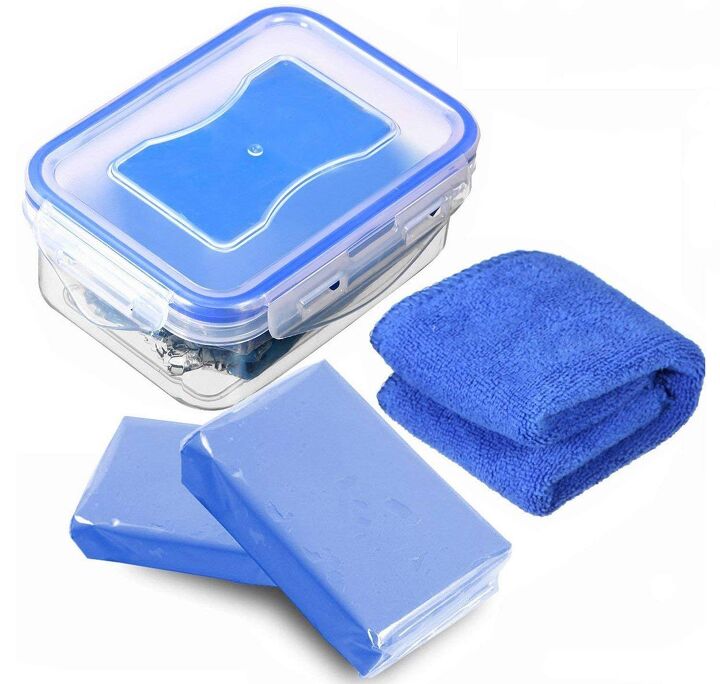
























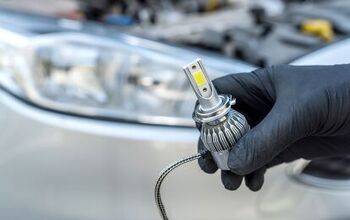

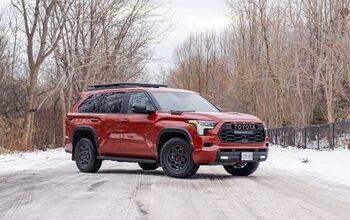

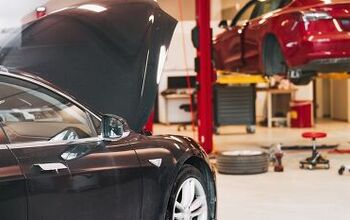
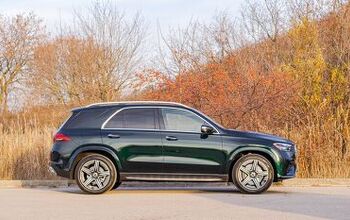
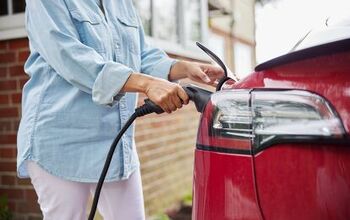








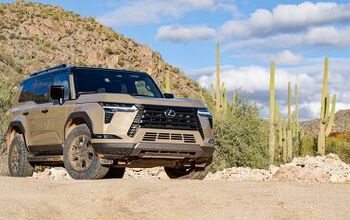
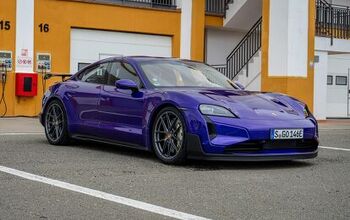
Comments
Join the conversation
I just wanted to learn how to use the clay bar. Thanks for the schooling.
Took delivery on my 2023 C8 Corvette in February, 2023. Brought it home, put the sandwich bag on my hand and lightly ran my hand over the surface. The surface felt like sandpaper. Grabbed the Meguiar's clay bar kit and went to work. Polished, waxed, and the car surface was perfect.